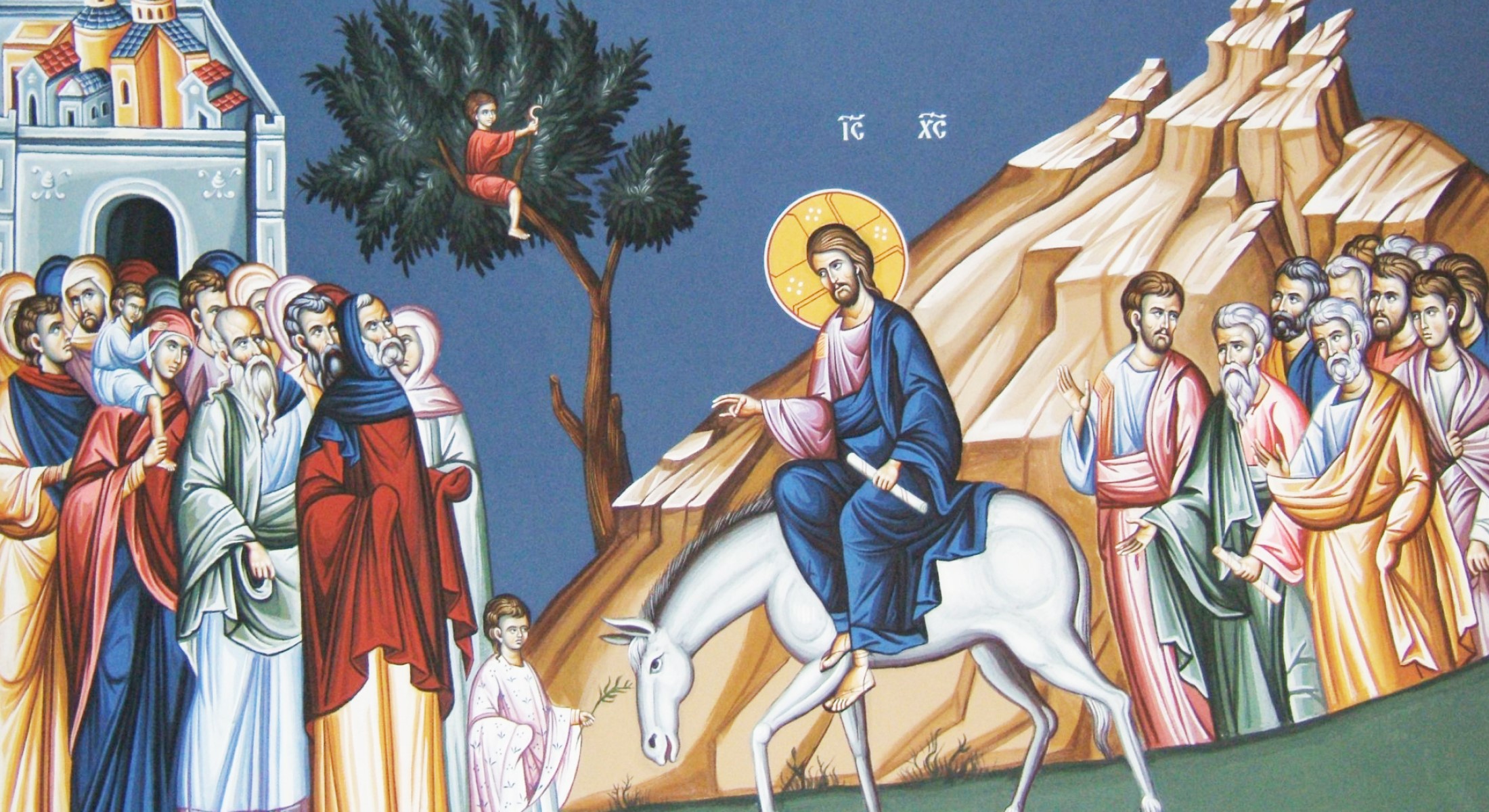
Breaking the Fourth Wall
Palm Sunday. Fr Oliver Keenan take us on a journey through Bethphage.
If you have an idle moment, you can wander the streets of Bethphage on Google Maps. It doesn’t seem particularly remarkable today and I doubt it did when Jesus arrived there on his way to Jerusalem. I mean no offence to Bethphageans when I say that it has the feel of a commuter town about it: most of the people there probably live with reference to Jerusalem, just a couple of miles away. But in Jesus’s time, things might have been the other way around. Many in Jerusalem would have had their eye on Bethphage, a place that had acquired an enormous significance in the eschatological and messianic imagination of Jewish theologians of Jesus’s day. The place whose name meant something unflattering like ‘house of the unripe figs’ was to be the place where the ripening took place, the scene of a great clash between good and evil, the stage where the Lord’s judgment would finally be pronounced. Bethphage, in all of its ordinariness, was a sign of an awaited liberation. The prophecies foretold Bethphage as the scene of a dramatic splitting duality in which a new valley would be carved out of the rock of the earth and mountains displaced by the feet of the Lord (Zechariah 14:1-4).
St Matthew’s restrained, understated subtlety presupposes all of that. St Matthew mostly seems concerned to show that Jesus, for all of his surprise and subversion, did precisely what the Messiah was supposed to do, in coming via Bethphage and in every other detail. Matthew stresses that in the humility of the incarnate Son there is no loss of majesty, no depotentiation. What we see is the power of God writ large, in-and-as the humble pilgrim. Nonetheless, we can see something of the ambivalence and duality of Bethphage playing itself out in Jesus’s triumphal entry into the Holy City. By faith, we do indeed see God in Christ carving a new pathway into our world, a pathway that will lead onwards through the Lord’s death and into the glory of resurrection. We do indeed hear the city rumbling, not with the sound of earthquake but with the sound of exultation, the raucous singing of ‘Hosanna’, the bustle and movement of bodies as they gather themselves and others around the Messiah. We can easily sense the excitement, the feeling of fulfilment, the pulse that now is the favourable time, the intuition that something is indeed ripening in their midst.
Yet this there is still a fundamental ambivalence. We know—as the first readers of Matthew’s Gospel knew—that the crowds will turn on Jesus within a matter of hours. Can we take seriously their granting him the Messianic status, or are we inexorably led to doubt their sincerity? Certainly, there is something performative taking place here, perhaps even something parodic. Things are not quite right; the signs and symbols are all out of joint. The victorious Christ does not arrive on the warhorse but on a donkey. Palm branches were liturgically suited to the celebration of Tabernacles rather than Passover. The greeting ‘Hosanna’ literally means ‘please save’, but does it sound more like triumphalism than desperation? We might take this to point simply to the generic ambivalence that resides in all human lukewarmth (how easily we slide from confident proclamation to habitual sinfulness; doesn’t our own over-exuberance sometimes mask a more basic vulnerability, even doubt?). But it might also be that this is some kind of deconstruction of the rituals of power politics, the unmasking of their utter absurdity in their fulfilment by the living presence of divine power himself.
There is certainly something playful about this, but pantomime doesn’t quite capture it: Jesus is not mocking or jesting, or even simply pushing the boundaries; he is deadly serious. In Ancient Greek comedies, there was often a moment of ‘parabasis’ when the audience were no longer simply passive observers of an unfolding drama but directly engaged, embroiled into the act itself. The parabasis broke through the framing of the play by transgressing the invisible wall between stage and audience. It could be frightening, but it unleashed new meaning and significance. That, it seems to me, is what Jesus is doing here: cutting through the invisible wall of alienation, drawing the crowd (and us) into the scene. The crowd are swept up into his dramatic act of redemption, drawn to participate in the deconstruction of their own illusions and fantasies of political liberation. No longer mere observers, they are now participants in the process of ripening. This, of course, will have consequences that they cannot yet foresee. But the same parabasis is worked by the question that hangs in the air today just as it did on that day in Jerusalem: ‘who is this?’ In finding an answer, we are not too look to the distant promise of Bethphage, but here and now. As T.S. Eliot puts it:
Quick now, here, now, always
a condition of complete simplicity
(Costing not less than everything)
And all shall be well and
All manner of thing shall be well.
Readings: Matthew 21:1-11 | Isaiah 50:4-7 | Philippians 2:6-11 | Matthew 26:14-27:66
Image: Serbian icon of the Entry of Christ into Jerusalem, CC BY-SA 3.0, via Wikimedia Commons



Marion
beautiful. thank you
Kenneth Bromage
Thank you, Fr. Oliver, for this illuminating reflection.